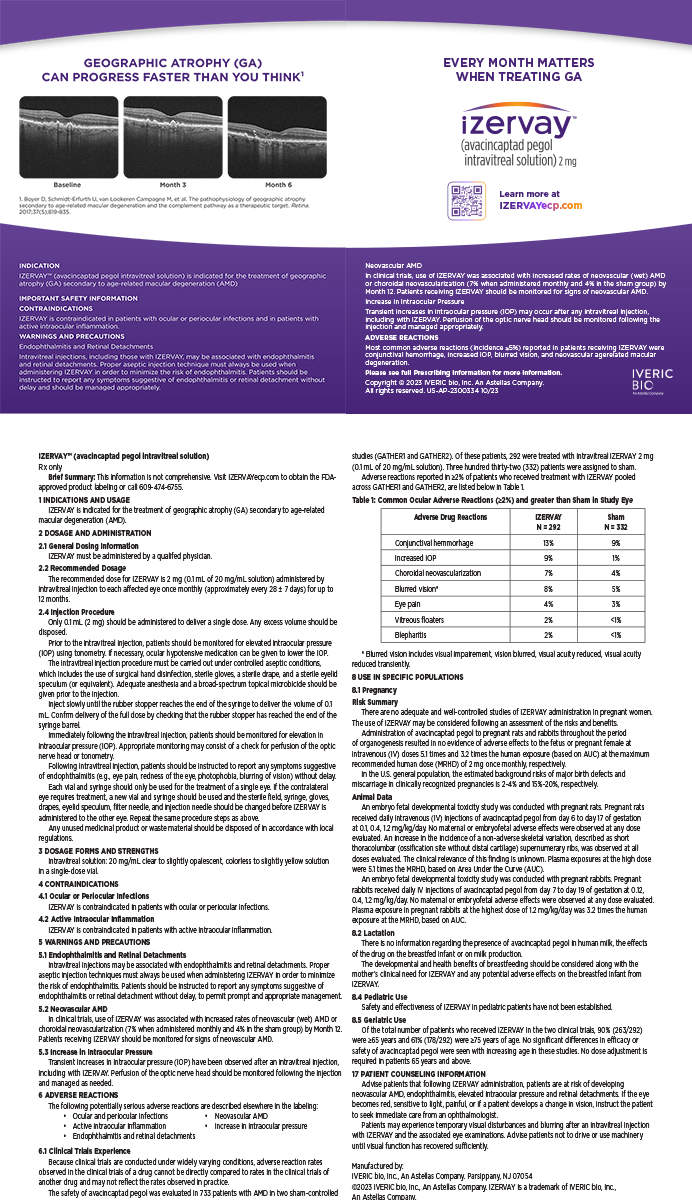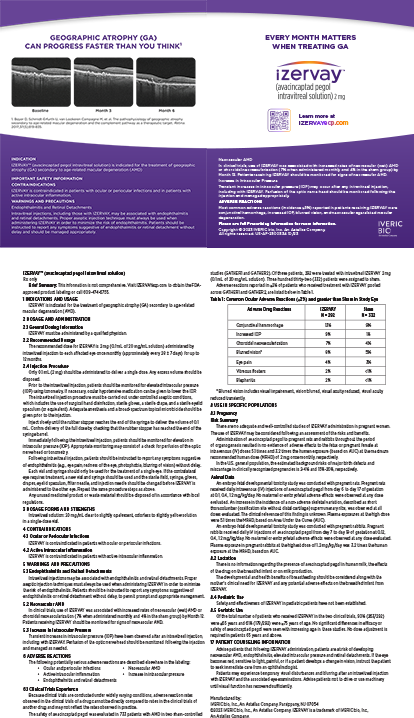What do you think is the most prevalent cause or etiology of negative dysphotopsias after an IOL’s implantation? If a patient has intolerable negative dysphotopsias,what treatment do you recommend?
SAMUEL MASKET, MD
From our clinical findings using anterior segment ultrasound biomicroscopy analysis and ray-tracing studies, Nicole R. Fram, MD, and I concluded that the underlying cause of negative dysphotopsia is the interface of the anterior capsulorhexis and the anterior surface of an IOL implanted in the bag.1 Negative dysphotopsia has been reported with bag-placed IOLs of any material and design. However, we found that the problem is not associated with lenses placed in the sulcus or ACIOLs. Most frustrating to the patient and surgeon is that negative dysphotopsia occurs only in cases of “anatomically perfect” surgery with a centered IOL covered by the anterior capsulorhexis.
Patients' symptoms, if they persist longer than 6 months, may be helped only by surgery, because pharmacologic pupillary constriction paradoxically worsens symptoms. Likewise, an in-the-bag IOL exchange for a different lens fails to help. Fortunately, we reported success in reducing the symptoms of negative dysphotopsia with a secondary piggyback IOL or secondary “reverse optic capture” (ie, moving the optic into the sulcus while leaving the loops in the bag) in 10 of 10 eyes. To date, the number of cases improved after secondary piggyback IOL or secondary “reverse optic capture” has expanded to 13 of 13 eyes. Additionally, for prophylaxis, we have performed reverse optic capture as a primary strategy for the second eye of patients who were highly symptomatic after surgery on the first eye.
CARLOS BUZNEGO, MD
As busy cataract surgeons, we are constantly reminded of our success when patients rave about their postoperative visual improvement. The occurrence of negative dysphotopsia after uncomplicated cataract surgery is frustrating. Patients often describe a shadow in their temporal visual field while raising their cupped hand lateral to their affected eye. This “dysphotopsia salute” almost always accompanies the verbal description of the phenomenon.
During the past several years, there has been significant controversy over the cause and treatment of the condition. IOL exchange, pharmacological pupillary manipulation, piggyback IOLs, and simple reassurance have all been suggested treatments. In my experience, the simple reassurance that negative dysphotopsia is a common and expected phenomenon that will improve over time has been uniformly successful. In addition, I utilize the simple yet ingenious “Miami solution.” It entails strict instructions to patients not to raise their hands above their waists during the postoperative period, thus eliminating the dysphotopsia salute while the neuroadaptive process takes effect.
STEVEN J. DELL, MD
The peer-reviewed literature contains numerous conflicting theories regarding the cause of negative dysphotopsias. Some have attributed the phenomenon to lens design or material, specifically hydrophobic acrylic.2,3 Others have implicated temporal clear corneal incisions.4 Still others believe that the real problem relates to the distance between the iris and the IOL.5 To sum it up, in several relatively small series, various treatments have been explored that either worked or did not.
In a recent series,1 Dr. Masket and his colleague successfully resolved the complaints of all the patients in their series treated with either a piggyback IOL or reverse optic capture. From an optical standpoint, both of these strategies change the physical relationship between the anterior edge of the IOL and two structures in the eye, the anterior capsule and the iris. In their article, Dr. Masket and his colleague noted that one patient in the series was treated with haptic-iris suturing, which decreased the iris-IOL distance, but the symptoms of negative dysphotopsia persisted. They asserted quite logically that this result contradicts the theory that iris-IOL distance is implicated in negative dysphotopsia.1 Their new hypothesis implicating the anterior capsule-IOL relationship may or may not be correct. The failure of some cases of negative dysphotopsia to improve with Nd:YAG treatment of the anterior capsule, which dramatically alters the anterior capsule-IOL relationship, would seem to argue very strongly against this theory.
The problem with all of the proposed theories is that they are based upon cases in the literature, each of which represents an emotionally charged and very frustrating situation for the patient and the doctor. For example, the unresponsive patient in Dr. Masket’s series underwent three surgical interventions with two different doctors, a maddening situation.
I once had a suit custom-made by a fancy Saville Row tailor in London. There was a defect in the thread used to sew the suit, which required a frustrating and very inconvenient return visit to the tailor for repairs. This process triggered my sudden discovery of a whole new set of defects in the suit that I am quite sure would otherwise never have attracted my attention. My point is that we need to exercise caution when drawing conclusions from the resolution or persistence of symptoms in this small group of patients. My clinical suspicion is that negative dysphotopsias are multifactorial, they are probably more common among some IOLs than others, and they are generally improved when the iris-IOL distance is reduced using one method or another.
WARREN E. HILL, MD
Some form of dysphotopsia immediately after cataract surgery is not uncommon, but it is impossible to predict who will experience the long-term, disabling symptoms of negative dysphotopsia. It is tempting to think that a high index of refraction and square edge design are solely responsible for negative dysphotopsia, but all of the last six patients referred to me for unrelenting symptoms enjoyed a complete resolution after an exchange of the original IOL for a three-piece, square-edged acrylic IOL placed in the ciliary sulcus. Dr. Masket has published outcomes suggesting that, for negative dysphotopsia, the position of the optic, moved in front of the anterior capsulorhexis’ edge by either reverse optic capture or sulcus placement, may be the most important aspect of addressing this problem.1 For the symptoms of purely negative dysphotopsia, my treatment of choice is either reverse optic capture or an IOL exchange with sulcus placement that moves the optic of the IOL in front of the anterior capsulorhexis.
DOUGLAS D. KOCH, MD
I believe that there are at least two causes of negative dysphotopsia. In his study, Dr. Masket convincingly showed that one etiology is coverage of the edge of the optic by the anterior capsule.1 I believe that another cause is the milled or roughened square edge of the IOL. Some of my symptomatic patients have little or no capsular overlap, and I recently used the Nd:YAG laser to reduce capsular coverage in a highly symptomatic patient—with no change in symptoms. Also, I have found that patients are typically most symptomatic during the early postoperative period, when the capsule is relatively clear but the IOL is still moving or fluttering slightly in the capsule. I believe that their symptoms are due, in these instances, to the movement of the shadow on the retina, which prevents neuroadaptation.
To date, I have never had to treat a patient for this complication and, in fact, have seen only two who have excessive symptoms beyond 1 year postoperatively. However, both of them may require surgery, in which case I plan to exchange their lenses and insert a STAAR AQ2010V IOL (STAAR Surgical Company, Monrovia, CA), which has a rounded edge, in the ciliary sulcus.
Section Editor John F. Doane, MD, is in private practice with Discover Vision Centers in Kansas City, Missouri, and he is a clinical assistant professor with the Department of Ophthalmology, Kansas University Medical Center in Kansas City, Kansas. Dr. Doane may be reached at (816) 478-1230; jdoane@discovervision.com.
Carlos Buznego, MD, is an anterior segment surgeon and founding partner of the Center for Excellence in Eye Care in Miami. He is also a voluntary assistant professor at the Bascom Palmer Eye Institute in Miami. Dr. Buznego may be reached at (305) 598-2020; cbuz@comcast.net.
Steven J. Dell, MD, is the director of refractive and corneal surgery for Texan Eye in Austin and chief medical editor of Cataract & Refractive Surgery Today’s sister publication Advanced Ocular Care. Dr. Dell may be reached at (512) 327-7000.
Warren E. Hill, MD, is in private practice at East Valley Ophthalmology in Mesa, Arizona. Dr. Hill may be reached at (480) 981-6130; hill@doctor-hill.com.
Douglas D. Koch, MD, is a professor and the Allen, Mosbacher, and Law chair in ophthalmology at the Cullen Eye Institute of the Baylor College of Medicine in Houston. He acknowledged no financial interest in the product he mentioned. Dr. Koch may be reached at (713) 798-6443; dkoch@bcm.tmc.edu.
Samuel Masket, MD, is a clinical professor at the David Geffen School of Medicine, UCLA, and is in private practice in Los Angeles. Dr. Masket may be reached at (310) 229-1220; avcmasket@aol.com.
- Masket S,Fram N.Pseudophakic negative dysphotopsia:surgical management and new theory of etiology. J Cataract Refract Surg.2011;37(7):1199-1207.
- Cooke DL.Negative dysphotopsia after temporal corneal incisions.J Cataract Refract Surg.2010;36(4):671-672.
- Tester R,Pace NL,Samore M,Olson RJ.Dysphotopsia in phakic and pseudophakic patients:incidence and relation to intraocular lens type(2).J Cataract Refract Surg.2000;26(6):810-816.
- Osher RH.Negative dysphotopsia:long-term study and possible explanation for transient symptoms.J Cataract Refract Surg.2008;34:1699-1707.
- Vamosi P,Casakany B,Nemeth J.Intraocular lens exchange in patients with negative dysphotopsia symptoms. J Cataract Refract Surg.2010;36(3):418-424.


